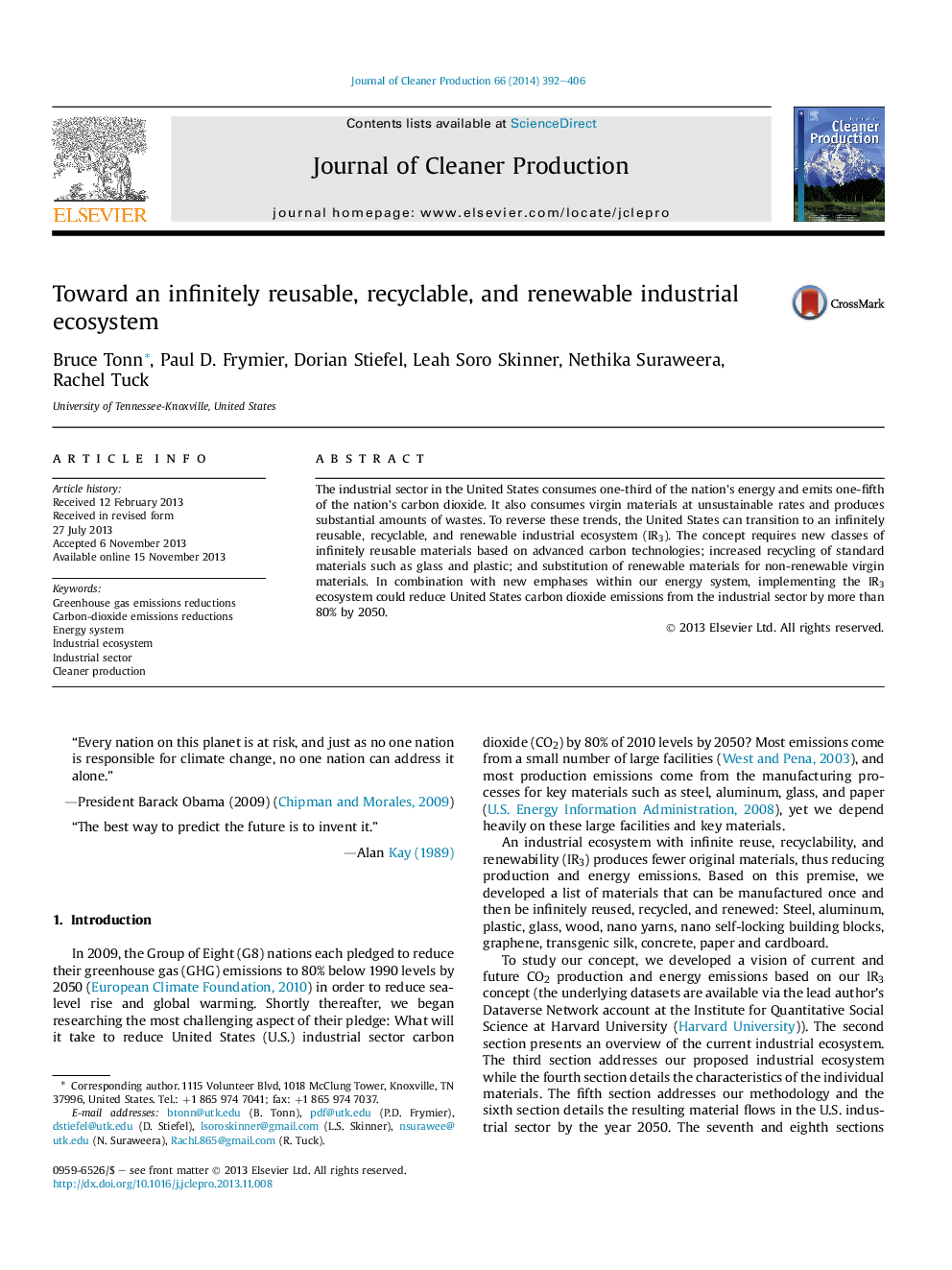| Article ID | Journal | Published Year | Pages | File Type |
|---|---|---|---|---|
| 1745007 | Journal of Cleaner Production | 2014 | 15 Pages |
The industrial sector in the United States consumes one-third of the nation's energy and emits one-fifth of the nation's carbon dioxide. It also consumes virgin materials at unsustainable rates and produces substantial amounts of wastes. To reverse these trends, the United States can transition to an infinitely reusable, recyclable, and renewable industrial ecosystem (IR3). The concept requires new classes of infinitely reusable materials based on advanced carbon technologies; increased recycling of standard materials such as glass and plastic; and substitution of renewable materials for non-renewable virgin materials. In combination with new emphases within our energy system, implementing the IR3 ecosystem could reduce United States carbon dioxide emissions from the industrial sector by more than 80% by 2050.
